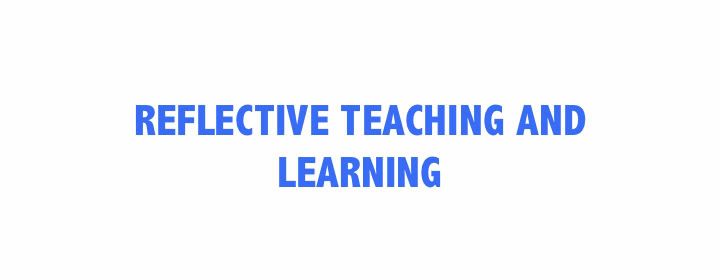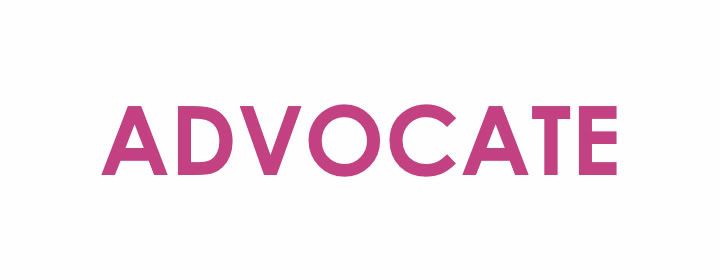EEAL was created by a group of like minded individuals that grew increasingly dissatisfied with NAEYC. Instead of sitting back and complaining, we took action and became involved with a local AEYC affiliate. Despite our best efforts and active participation, we felt powerless as decisions were made that did not seem to take into account the best interests of children and the professionals that care for them. We spent many years "fighting the good fight" and encouraging our collegaues to hang in there. In early 2012 we decided that we were done playing nice and we drafted a formal letter to NAEYC stating our grievances. When we did not hear back from them for several months, EEAL was born. Check out our Statement of Grievances and let me know what you think.
Statement of Grievances
By
the Board of the Beach Cities Association for the Education of Young Children
(BCAEYC)
April
25, 2012
After much
deliberation, the Board of BCAEYC has determined that it is in the best
interest of the profession and the members of the National Association for the
Education of Young Children (NAEYC) for the Board of BCAEYC to publicly state
our grievances with NAEYC.
This Statement is made
without malice, in the hopes that NAEYC will survey its membership and consider
the opinions of the membership in regard to a number of significant matters of
concern and appropriately address these concerns.
NAEYC, having failed to
this point to appropriately address such matters has compromised the integrity
of the association and its members. The
Board of BCAEYC is therefore committed to making these concerns public and is
hereby requesting that NAEYC respond in kind.
A
Brief History:
NAEYC has a wonderful
history of being a professional association that was driven by ECE
practitioners and was responsive to the needs and input of the membership. This value system resulted in an association
that once proudly counted more than 100,000 members worldwide. The association, through no fault of its own,
has seen these numbers fall as the Economic Crisis has rippled across the
country. However, we believe that NAEYC
has contributed to this loss of support by way of some misguided actions and
policies. NAEYC is not alone in this
trend. Programs and Initiatives across
the country, in their efforts to secure funding and political support, have
endured “vision drift”. The Board of
BCAEYC has determined that it will not acquiesce to vision drift and will hold
both the association leadership and its membership responsible.
In addition, NAEYC has
engaged in a number of decisions that indicate its intent to move away from the
grass-roots culture of an association driven by the needs and input of its
membership in favor of a corporate and institutional culture. It has made important decisions without adequate
consideration of the capacity, needs, and input of the members and
member-affiliates. Such decisions
include but are not limited to:
·
Re-affiliation
·
Accreditation
·
Position
Statement on Technology and Young Children
Vision
Drift:
Like the more commonly discussed
“mission drift” in which an agency or association alters its mission in an
effort to secure support and funding – NAEYC has suffered “vision drift”. The young child and the ECE professional were
once central to the vision of NAEYC.
Below is NAEYC’s Vision Statement.
Vision
Statement
NAEYC's efforts are designed to
achieve these ends:
- All children have access to
a safe and accessible, high quality early childhood education that
includes a developmentally
appropriate curriculum; knowledgeable and well-trained program
staff and educators; and comprehensive services that support their health,
nutrition, and social well-being, in an environment that respects and supports diversity.
- All early childhood
professionals are supported
as professionals with a career ladder, ongoing professional development
opportunities, and compensation that attracts and retains high
quality educators.
- All families have access to
early childhood education programs that are affordable and of high quality and
actively participate in their children's education as respected reciprocal
partners.
- All communities, states, and
the nation work together to ensure accountable systems of high-quality
early childhood education for all children.
The Board
of BCAEYC believes strongly that NAEYC has lost sight of this stated vision in
a number of ways:
·
Developmentally
Appropriate Curriculum: We believe that
the new Position Statement on Technology and Young Children contradicts best
practice as suggested by many of NAEYC’s member leaders. In addition, highly respected entities such
as the Academy of American Pediatrics oppose screen time for children under two
years of age. The Board of BCAEYC
submitted a letter of opposition to this newly revised position statement during
the period in which public feedback was invited. We have received absolutely no response to
our concerns from anyone at NAEYC. At
the same time, we have received a significant amount of feedback from other
members and colleagues in support of our opposition. We have received virtually no feedback
requesting that we withdraw our opposition.
·
Developmentally
Appropriate Curriculum: The NAEYC
Accreditation All Criteria Document,
2012, consists of 86 pages of measures.
The very volume of these measures has resulted in an oppressive amount
of work and reflection that is required of a program. This labor intensive effort often times
effectively acts to reduce the developmentally appropriate practice of a
program as it drains the attention and energy of candidate program staff away
from the children. This phenomenon is
also seen in State and Federally-funded programs and the membership of NAEYC
has long been critical of this unintended consequence. However, instead of streamlining
Accreditation in response to such concerns, NAEYC has redoubled the
complication of Accreditation – adding expense and increased time commitments
once dedicated to the children. This
notion of adding quality by subtracting resources is driven by those that have
lost touch with direct services for children and their families.
·
Supports
Diversity: Criteria 6.A.05a calls for at
least 75% of teachers to have a minimum of a baccalaureate degree or equivalent
by 2020. Whitebook, et al, 2006,
identified that teacher language and cultural diversity in inversely related to
educational attainment. In other words,
it becomes increasingly unlikely that an NAEYC Accredited program can support
the linguistic and cultural diversity of the community which it serves. Whitebook et al, 2006, also discovered that
highly qualified teachers were well-represented in private programs – yet this
group least reflected the cultural and linguistic demographics of
California. This would seem to indicate
that accredited programs are more common to affluent communities than to
communities at risk.
·
High
Quality: As indicated above,
Accreditation requirements may have the unintended consequence of reducing the
cultural and linguistic diversity of a program.
However, the presence of teachers that reflect the language and culture
of a community is an indicator of
quality (Kagan, S, 2009)
·
Support as professionals with
a career ladder…ongoing professional development opportunities…: NAEYC has, through its insistence that
California AEYC, dismantle its highly successful State-Section-Chapter model in
favor of a State Affiliate-Local Affiliate model, reduced the opportunities for
ongoing professional development. The
Section structure in California was an important step in developing
leadership. Since the Section model was
discarded, it has been increasingly difficult to find leaders that are
interested in making the leap from a leadership position at the local level to
a State leadership role.
·
Supports Diversity/Support as
professionals with a career ladder…ongoing professional development
opportunities…: NAEYC’s decision to charge registration fees
to presenters at the National Conference has likewise reduced professional
development opportunities for its members.
Where innovative, emerging leaders in ECE once submitted workshop
proposals to NAEYC in the hopes of having their conference experience partially
“subsidized” by a complementary registration – today’s conferences are dominated
by sessions by seasoned and well positioned leaders, those employed by
well-funded programs, or those with services or products to sell. The diversity of the real world ECE delivery
system is silenced by this current practice.
The sole criteria for workshop proposals needs to be the content of the
workshop – and not the ability of the presenter to afford the trip.
Note: These are significant compromises to the
vision of NAEYC and as such must be examined seriously rather than being
dismissed as a matter of nuisance by a renegade Affiliate Board. The Board of BCAEYC is a high quality,
diverse, dedicated group of leaders that represents a cross-section of the ECE
delivery system and includes representatives from colleges, family child care,
private programs, state-funded programs, consultants, and ECE students.
Customer Service: As
mentioned before, the history of AEYC is that of a membership driven, grass-roots
association. Affiliate leadership was,
and is, an act of volunteerism and dedication.
When the National Office fails to provide the necessary and expected
quality of support, it strains the nature of the National-Local Affiliate
relationship. BCAEYC has experienced a
number of customer service challenges.
·
NAEYC has
made repeated requests of our Treasurer to submit the same documents for
electronic deposit of monies to our Affiliate account.
·
NAEYC has
misplaced paperwork submitted by BCAEYC related to educational awards.
·
NAEYC has
failed to respond to our letter in opposition to the Technology and Young
Children position statement with any invitation for dialogue.
·
NAEYC has
increased the Affiliate share of expenses for insurance, etc, without increasing
the quality of its customer service.
·
NAEYC has
failed to respond to repeated calls from the field to address the onerous
nature of Accreditation with any invitation for true and meaningful dialogue.
These
failures contributed directly to BCAEYC Board members making the deliberate
decision to decline NAEYC’s recent invitation for a dialogue in Santa
Monica. Given its history, this
invitation appeared to be disingenuous.
BCAEYC
has committed its energies this upcoming year to holding NAEYC accountable to
its membership. We will continue to
advocate and encourage our colleagues to do the same. We not only look forward to your response –
we expect a well-considered response that invites greater collaboration between
the National and the local affiliates.
This day,
April 25, 2012, the members of the Board of BCAEYC,
Stacey Smith-Clark
Michelle Moen
Linh Terry
Angela Beck
Gregory Uba
Catherine Scott
Jenn Palma
Jessica Cardenas
Jocelyn Tucker
Lindsey Evans
Carol
Minami
Lori
Davidson
Serena
Sun
Morma
Arambula
Ronnie Silverstone
Sources:
Kagan, Sharon L, 2009, American Early Childhood Education:
Preventing or Perpetuating Inequity?
NAEYC,
2012, All Criteria Document
Whitebook,
M. et al, 2006, California Early Care and
Education Workforce Study, 2006





















